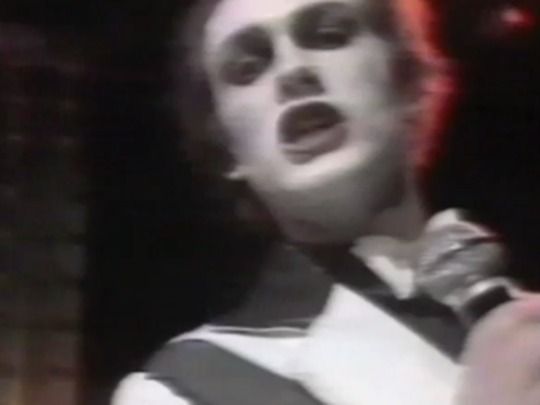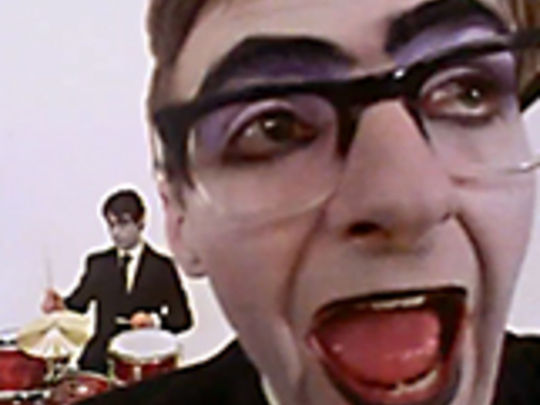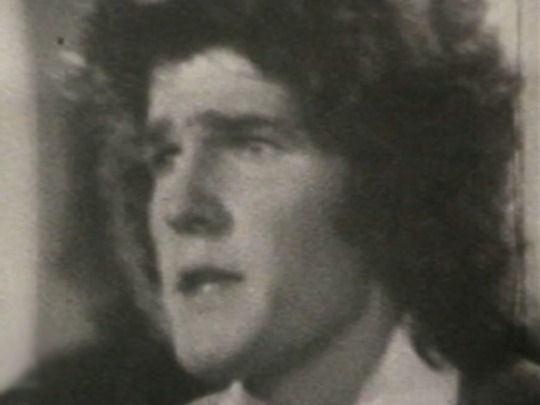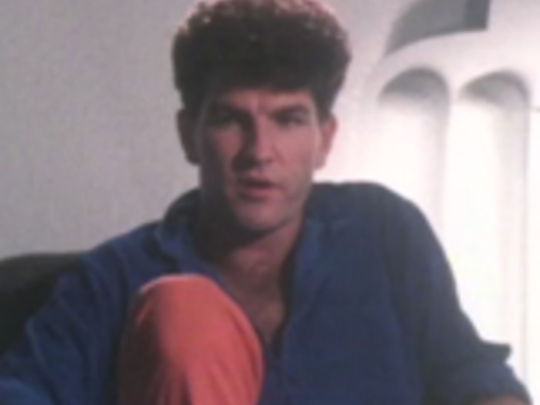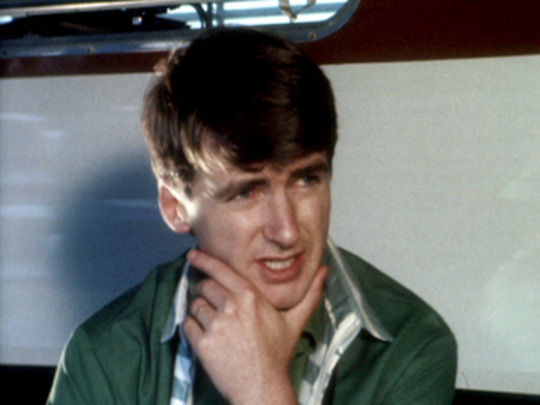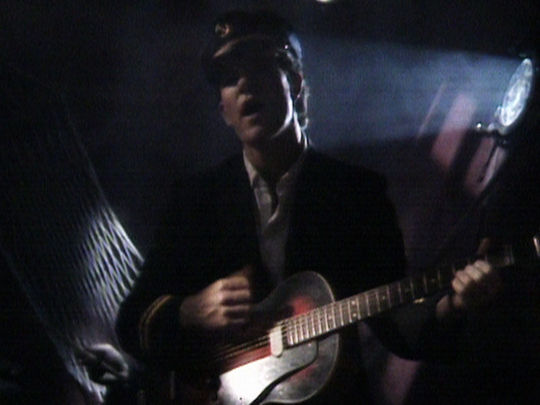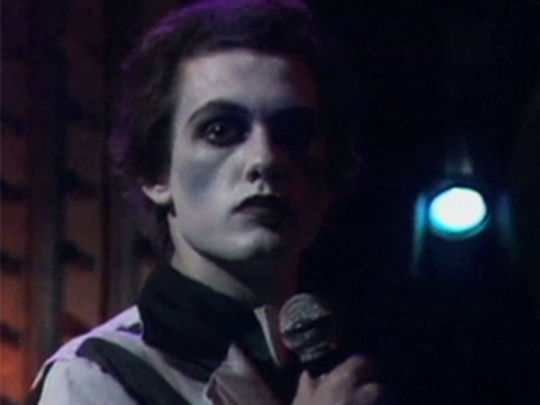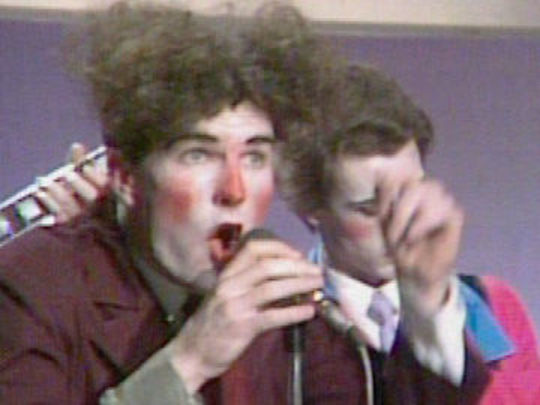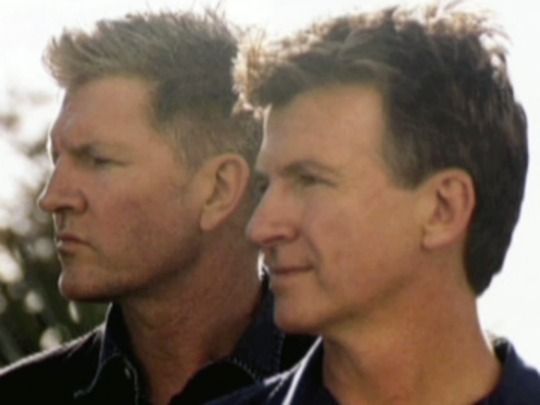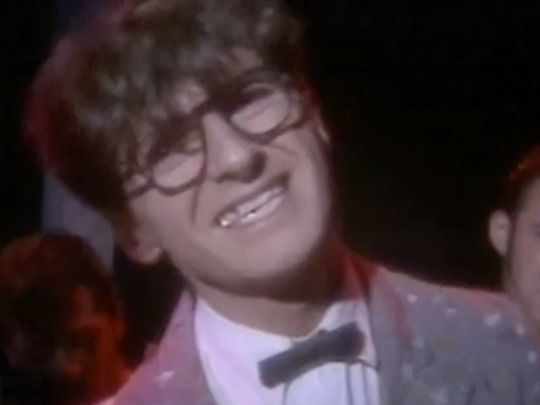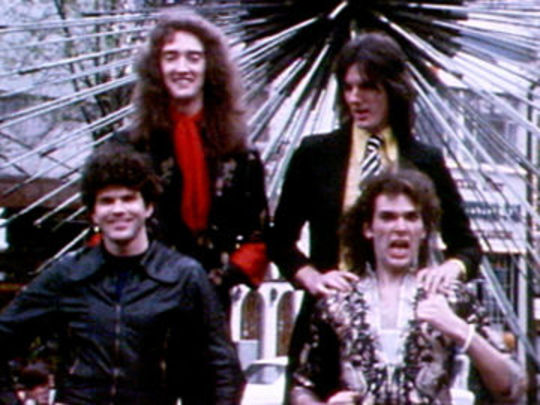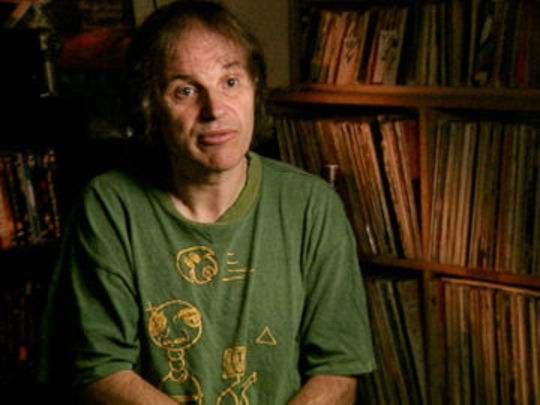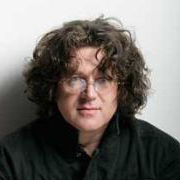Split Enz
The Evolution of the Enz
Before Lorde, OMC and Crowded House, Split Enz were New Zealand’s international trailblazers. The local industry was barely twenty years old when they departed for Australia, leaving home in March 1975, effectively for good.
Over the next ten years, they returned to tour but were never again based in their homeland. They took their role as ambassadors seriously — from the NZ in their name to silver fern tracksuits and Māori motifs in their costumes and album art. Tim Finn did at times affect the air of Shakespearian fool (“if music be the food of love, Split Enz be silverware”), but they never denied their origins.
They began as friends at Auckland University in 1972, driven by a burgeoning creative partnership between Phil Judd and Tim Finn. Their adolescent years might have been signposted by Beatles releases but Judd, in particular, brought an avant-garde edge to the band.
Their closest musical relatives were probably English art rockers like Genesis and Roxy Music, but Split Ends (soon to be Enz) had their own unique musical and theatrical sensibility — complete with spoon solos. The results were strikingly at odds with both New Zealand’s denim clad rockers of the day (described by member Mike Chunn as “the long haired, r’n’b based, flared jeans and Indian shirt brigade”), and the greyness that still permeated the country in the hangover from Keith Holyoake’s National government’s decade in power.
Chronically unsuited to the grind of the pub circuit, they played Buck-a-Head theatre shows in Auckland and targeted an NZBC TV talent show in hopes of building a national profile. New Faces attracted a mass audience in those black and white, single channel days. Their initial performance in the 1973 series was well received, but New Faces would always be a light entertainment show. They came second to last in the final, with judge Phil Warren deeming them “too clever” (in retrospect, perhaps no higher praise). All-round family entertainers Bulldogs All Star Goodtime Band took overall honours.
The original masters of those New Faces shows are long gone, and the band’s contributions live on only in mute 8mm footage shot off the TV screen by a Finn family friend. TVNZ would show more of an interest in the years to come.
Two years later, the cameras capture them coming into their own. In 1975, they returned home to tour while debut album Mental Notes was being mixed in Australia. A performance of ‘Maybe’ on the inaugural Telethon does them few visual favours. It can’t hide their offbeat charm but the setting is cramped, the signage intrusive and these early costumes only hint at what is to come.
‘Spellbound’, shot for Grunt Machine during the same tour, stands in stark contrast. The band are resplendent in their new Noel Crombie-designed “black and whites” in a setting to match their aspirations. Avalon’s music videos were a mixed bunch at best but this one is stunningly realised (even if bass player and drummer don’t quite make their marks before their instruments come in). And it showcases Phil Judd at his menacing, masterful best.
The band would continue to feature on big and small screen: the Nambassa documentary includes a storming 1979 performance with borrowed gear (following a fire) as their career seemed headed into a downward spiral, arts programme Kaleidoscope deemed them worthy of serious artistic consideration in 1983, and the Sam Neill-narrated Spellbound documentary from 1994 remains the definitive screen biography.
There was always a strong theatrical component to their work, underpinned by Noel Crombie’s immaculate costumes and Raewyn Turner’s stage lighting, and they embraced music videos from the outset. In the pre-internet age, these clips became letters home. They were a way for New Zealand fans to track their progress – particularly once the Enz reached England in early 1976.
Phil Judd departed in mid 1977, to be replaced by Neil Finn. The directness of punk had reshaped the musical landscape and short sharp pop songs were now the order of the day. The Enz were no strangers to classic, melodic pop. They jettisoned their more baroque Judd-era epics and reinvented themselves for their third album Dizrythmia. The difference was there to be heard and seen in the urgency of ‘Bold as Brass’, and the sharpness of its video.
Neil Finn had joined very much in thrall of his older brother’s band. He was just 19 and barely proficient with an electric guitar. He would always look younger than the rest of the Enz, but over the coming years became a major creative force – contributing the band’s biggest hit ‘I Got You’ in 1980.
There were dark years beset by troubles with money, labels and booking agents and some of the now time-honoured pitfalls for Kiwi acts trying to make it overseas: bad timing (running headlong into punk rock when they first arrived in England), bad luck (‘Six Months in a Leaky Boat’ stalling in the UK chart when the BBC discouraged airplay, after a British navy destroyer was sunk in the Falklands War) and bad behaviour (a snub from their manager to US label boss Tommy Mottola doing little to help crack the American market).
The disappointment of America aside, the Finn brothers’ partnership flourished through the albums True Colours (1980), Waiata (1981) and Time and Tide (1982), until Tim grew restless. His departure — following 1983 solo album Escapade — hastened the end of the Enz. Neil soon realised that the band without his brother wasn’t the one he had joined as a teenager, and they couldn’t survive without either Finn. The parting single (‘I Walk Away’) and album (See Ya' Round) were aptly titled but, featuring two-thirds of Crowded House, pointed to the future as much as the past.
There have been occasional reunions over the years. Some were more successful (a 20th anniversary tour in 1992) than others (an awkward appearance on Holmes). None featured Phil Judd, who never quite made his way back into the fold (although he did collaborate with Tim Finn for parts of 1990's The Big Steal soundtrack).
The Split Enz legacy is measured in classic songs, their unique visual sense and an international career matched by few New Zealand acts, so far…
- Michael Higgins researched the first season and produced the second of Kiwi music series Give It A Whirl; he also produced music video series Hum. As programme director at Kiwi FM, he made NZ music rarities show Down the Back of the Couch. His favourite Split Enz albums are Mental Notes and Waiata.
Sources include
Mike Chunn, Stranger than Fiction: The Life and Times of Split Enz (Wellington: GP Publications, 1992)
Kerry Doole, 'Split Enz – Part One – The Seventies' AudioCulture website. Loaded 28 March 2013
Kerry Doole, 'Split Enz – Part Two – The Eighties'. AudioCulture website. Loaded 1 April 2013
